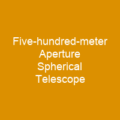Cameras: The Art of Capturing Moments
Imagine a world without cameras—where memories are fleeting and cannot be preserved. Cameras have become an indispensable tool in our lives, capturing moments that would otherwise fade into the past. How did this incredible invention come to be?
The Evolution of Photography
In the 19th century, photography was a groundbreaking innovation. Pioneers like Thomas Wedgwood, Nicéphore Niépce, and Henry Fox Talbot laid the foundation for modern cameras. The daguerreotype process, introduced in 1839 by Louis Daguerre, revolutionized commercial camera manufacturing. This was just the beginning of a journey that would see cameras evolve from bulky devices to sleek, multifunctional gadgets.
The Mechanics Behind Cameras
Cameras work through a series of mechanical components and principles. Light enters an enclosed box through a lens, which focuses it onto a light-sensitive medium. The shutter mechanism controls the duration that this light is allowed to enter, determining the exposure time.
Aperture: Controlling Light
The aperture, an opening adjusted by overlapping plates called the aperture ring, plays a crucial role. The size of the aperture can be set manually or automatically based on readings from an internal light meter. This adjustment is measured in f-stops, with each stop doubling or halving the amount of light entering the camera.
Shutter: Timing the Exposure
The shutter, another key component, determines how long the light-sensitive surface is exposed to light. There are two types: leaf-type and focal-plane shutters. In digital cameras, shutters can be mechanical or electronic, either global or rolling. The shutter speed, also known as exposure time, ranges from one second to 1/1,000 of a second.
Lens: Focusing the Light
The camera lens focuses light onto the film or digital sensor. It is constructed from multiple optical elements designed to reduce aberrations and distortions. The focal length determines how much of the scene can be captured, with wide-angle lenses providing a broad view and telephoto lenses capturing a narrower view with magnification.
Focus: Adjusting Clarity
The focus is adjusted through the focus ring on the lens. Autofocus features automate this process, while manual adjustments offer greater control over depth of field. Advanced lenses may include mechanical image stabilization systems and accessories like lens hoods and filters.
Types of Cameras: From Film to Digital
The world of cameras is vast, with various types suited for different needs. SLR cameras, large-format and medium-format cameras, compact cameras, rangefinder cameras, motion picture cameras, and digital cameras each offer unique capabilities.
Digital Cameras: The Future of Photography
The 21st century marked a significant shift with the mass adoption of digital cameras. These devices convert light into electronic data for direct processing and storage, offering immediate image review and adjustments through built-in monitors. Digital cameras have revolutionized how we create, share, and consume visual content.
Camera Accessories: Enhancing Your Experience
A wide array of accessories can enhance your photography experience. Flash units with battery-powered high-voltage discharge, light diffusers, mounts, reflectors, soft boxes, triggers, and cords are just a few examples. Other accessories include lens hoods, caps, adapters, filters, extension tubes, cases, monitors, tripods, microscope adapters, cable releases, dew shields, UV filters, batteries, and chargers.
Historical Cameras: From Daguerreotype to Digital
The history of cameras is a fascinating journey. SLR cameras, large-format cameras, medium-format cameras, TLR cameras, compact cameras, rangefinder cameras, and movie cameras each have their unique characteristics and uses.
Motion Picture Cameras: Capturing Motion
Motion picture cameras capture images in sequence at a rate of 24 frames per second. Ciné cameras take rapid sequences of photographs on an image sensor or film, with the illusion of motion achieved through playback at a specific speed.
Professional Video Cameras: Creating Electronic Moving Images
Professional video cameras create electronic moving images for television studios, music videos, and other applications. They use vacuum tubes or electronic image sensors. Camcorders combine a video camera and video recorder, allowing for recording and playback of video.
The Rise of Digital Cameras: From Kodak to Smartphones
The first camera using digital electronics was developed by Kodak engineer Steven Sasson in 1975. Later, Japanese company Nikon introduced an analog-recording electronic single-lens reflex camera in 1986. Full-frame digital SLR cameras were developed in Japan from around 2000 to 2002 and gradually became the dominant type for professional photography.
Smartphone Cameras: The New Normal
The first digital camera phone was introduced by Sharp in 2000. By the mid-2000s, higher-end cell phones had an integrated digital camera, and by the beginning of the 2010s, almost all smartphones had a digital camera. This has transformed how we capture and share moments.

As we look back at the evolution of cameras, it’s clear that they have transformed from simple tools into sophisticated devices that capture not just moments but entire stories. From the first daguerreotype to today’s smartphones, cameras continue to play a pivotal role in our lives, helping us preserve and share memories like never before.
You want to know more about Camera?
This page is based on the article Camera published in Wikipedia (retrieved on February 13, 2025) and was automatically summarized using artificial intelligence.





